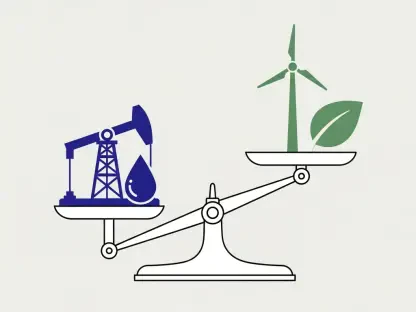In a remarkable stride toward a sustainable energy future, Austin Energy has achieved an unprecedented milestone by integrating a staggering 18.8 megawatts of local solar power into the grid, marking the largest annual increase in the utility’s history. This achievement showcases the city’s unwavering dedication to renewable energy and its innovative approach to tackling climate challenges. With a total of 749 new solar projects coming online, including 690 residential systems and 59 commercial installations, the effort reflects broad community participation. This surge elevates the utility’s local solar capacity to 188 megawatts, positioning it just 17 megawatts shy of the ambitious 205-megawatt target set for 2027. Beyond the numbers, this expansion underscores a powerful narrative of environmental stewardship, economic benefits, and enhanced grid reliability, demonstrating how localized clean energy solutions can transform a city’s energy landscape while fostering affordability for residents and businesses alike.
Driving Sustainability Through Community Engagement
A key pillar of this historic solar expansion lies in the robust community involvement and inclusivity that have fueled its success. Austin Energy has implemented targeted initiatives like the Shared Solar program, which empowers multifamily residents, including renters and low-income households, to access renewable energy benefits directly. A shining example is the 209-kilowatt installation at an affordable housing community with 156 units, proving that clean energy can be equitable. Additionally, partnerships with schools and nonprofits through programs like the Capacity-Based Incentive have led to impactful projects at educational institutions, reducing costs while providing learning opportunities for students. These efforts highlight a deliberate strategy to ensure that the advantages of solar power reach diverse sectors, creating a ripple effect of environmental and social benefits. By prioritizing accessibility, Austin Energy has not only expanded its renewable footprint but also built a model of community-driven sustainability that other cities might emulate.
Economic and Grid Benefits of Local Solar Power
The implications of this solar milestone extend far beyond environmental gains, delivering substantial economic and operational advantages for the region. Local solar generation enhances grid stability by producing electricity close to consumption points, which cuts transmission costs and helps moderate market prices during peak demand periods on the broader ERCOT grid. This localized approach also keeps energy spending within the community, bolstering the local economy and supporting affordability by reducing electric bills for both households and businesses. On the commercial front, large-scale installations, such as a 3.96-megawatt system at a major technology firm, illustrate the scalability of solar solutions for enterprises. Moreover, innovative frameworks like the Solar Standard Offer program have spurred investment, with 14.5 megawatts of projects already in progress and another 6.5 megawatts under development. Reflecting on this achievement, it’s clear that Austin Energy’s strategic focus on local solar has laid a strong foundation for a resilient and cost-effective energy future.









